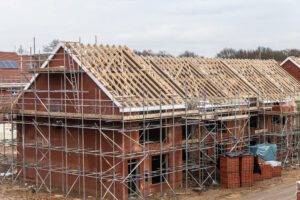There are construction sites everywhere, in every town and village and city and metropolis, there is always something being built, men and machines toiling for hours and days and months.
All this creates an environment that can prove incredibly dangerous if there is no effective management and organization in place. This is what construction site management is for, the process of supervising, orchestrating, and harmonizing all the dynamic moving parts, which includes all the resources, activities, and parties involved in bringing a construction project to fruition. This little guide will showcase some great strategies for effective construction site management, so let’s take a look.
Safety Is the Priority
First and foremost, by far the biggest priority on any construction site should not be profit, the construction itself, or speed, but safety, so that every worker will be as safe as possible. The industry already has a higher potential for accidents and even fatalities, naturally when working with large, dangerous machinery and at heights and so on, so safety should always be of paramount concern in every way. Dangerous waste, for example, should be taken care of by proper Construction Waste Management so everyone can keep working without any potentially disrupting or dangerous waste lying around and getting in the way. Construction site management starts with safety, making sure that every worker and machine is working within the rules without taking unnecessary, even illegal, risks.
Understanding Site Constraints
Understand the site constraints and opportunities, as considering factors that are site-specific is vital to good construction site management. Every construction project is defined by a certain set of objectives and parameters, where site conditions may play a rather significant role in making sure the project ends in success. So, a thorough site analysis before the actual construction starts, in the initial planning phase, is important to identify and address any challenges and opportunities. Site accessibility is one such factor that encompasses the ability of construction workers, materials, and equipment to move to and from the construction site and significantly impacts the efficiency of the project.
Healthy Worksite Culture
Worksite culture consists of the collective attitudes, values, behaviors, and kinds of communication of the individuals working on the site. The leadership, well, leads the way here, molding and shaping the job site culture, and subsequently imparting it to all the people on site, including all the workers and subcontractors. Maintaining such positive worksite morale enables and encourages open, clear communication and productive collaboration among the different workers, project stakeholders, and various subcontractors. Teamwork is vital when it comes to such a large and complex project consisting of so many moving parts, and making sure everyone behaves in such a manner that creates a cohesive pulling together is crucial if everyone wants to see the project finished.
Selecting Subcontractor Partners
Intelligently choosing subcontractor partners is a key factor in construction site management, with significant influence on whether the project sees success or not, as subcontractors play a vital role in carrying out specialized scopes of work, and the quality of their performance can impact the project’s timelines, quality, and final outcomes, positively and negatively. During the initial planning phase, there is often a roster of pre-qualified contractors, so using criteria like their safety rating, past performance, references, experience, and financial stability, the right contractors can be selected. As a general contractor, you need to consider the project’s goals and parameters when browsing the roster of subcontractors. For instance, if efficiency and speed are key to the project owner, subcontractors that have expertise in these aspects should be selected.
Thorough Documentation
Nowadays paperwork is everything, and if accountability, transparency, and effective project execution are to be maintained, thorough documentation is crucial, helping to capture critical information, provide a record of activities during the project, and facilitate communication between the different parties. When timelines, responsibilities, and work are accurately documented, it becomes simpler to hold teams and individuals accountable when deals have not been carried out as agreed upon, helping to avoid waste of time and finger-pointing and facilitating communication and problem-solving should complications arise. Construction projects also have to adhere to the rules, standards, and permits, and documenting everything helps to prove compliance with the regulations and laws. Plus, should the need arise in case of legal conflicts or challenges, documentation can serve as evidence and supporting legal claims or defenses.
Construction projects are everywhere, and it is paramount for everyone’s sake, the workers, the project owners, the public, the authorities, and so on—that everything is held to a high standard of safety, procedures, etc. Effective construction site management is vital to achieve this.
